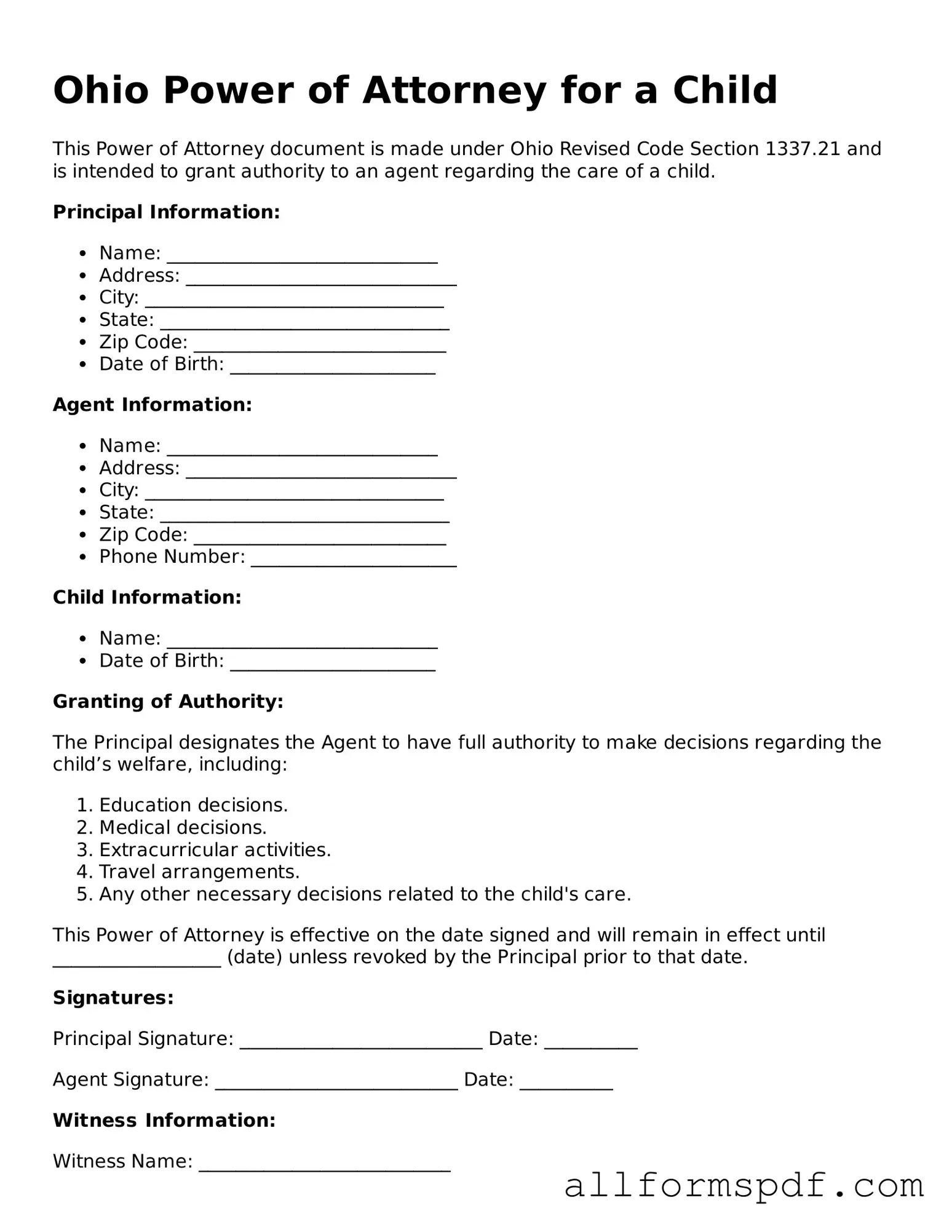Filling out the Ohio Power of Attorney for a Child form can be a straightforward process, but many individuals stumble over common pitfalls. One of the most frequent mistakes is failing to specify the powers granted to the agent. This document allows a parent or guardian to delegate authority to another adult, but if the powers are not clearly outlined, it can lead to confusion and disputes down the line. Always ensure that the scope of authority is detailed, whether it involves medical decisions, educational matters, or general care.
Another common error involves not signing the form in the presence of a notary public. Ohio law requires that the Power of Attorney for a Child be notarized to be legally valid. Omitting this step can render the document ineffective, leaving the appointed agent without the necessary authority to act on behalf of the child. Take the time to find a qualified notary and ensure that all signatures are properly executed.
Additionally, people often overlook the importance of including the child’s full legal name and date of birth. Incomplete or incorrect information can lead to complications when the agent attempts to exercise their authority. It’s vital to double-check that all personal details are accurate and match official documents. This simple step can save a lot of hassle later on.
Some individuals mistakenly believe that the Power of Attorney for a Child is a permanent arrangement. However, this document can be revoked at any time by the parent or guardian. Failing to understand this can lead to misunderstandings about the duration of the authority granted. It’s essential to communicate clearly with the agent about the terms and conditions of the arrangement, ensuring everyone is on the same page.
Finally, neglecting to discuss the arrangement with the child can be a significant oversight. While the child may not be the one filling out the form, it’s crucial to involve them in the conversation, especially if they are old enough to understand. This can help ease any anxieties they may have about the changes in their care and ensure that they feel secure in the process. Open communication fosters trust and clarity, making the entire experience smoother for everyone involved.
